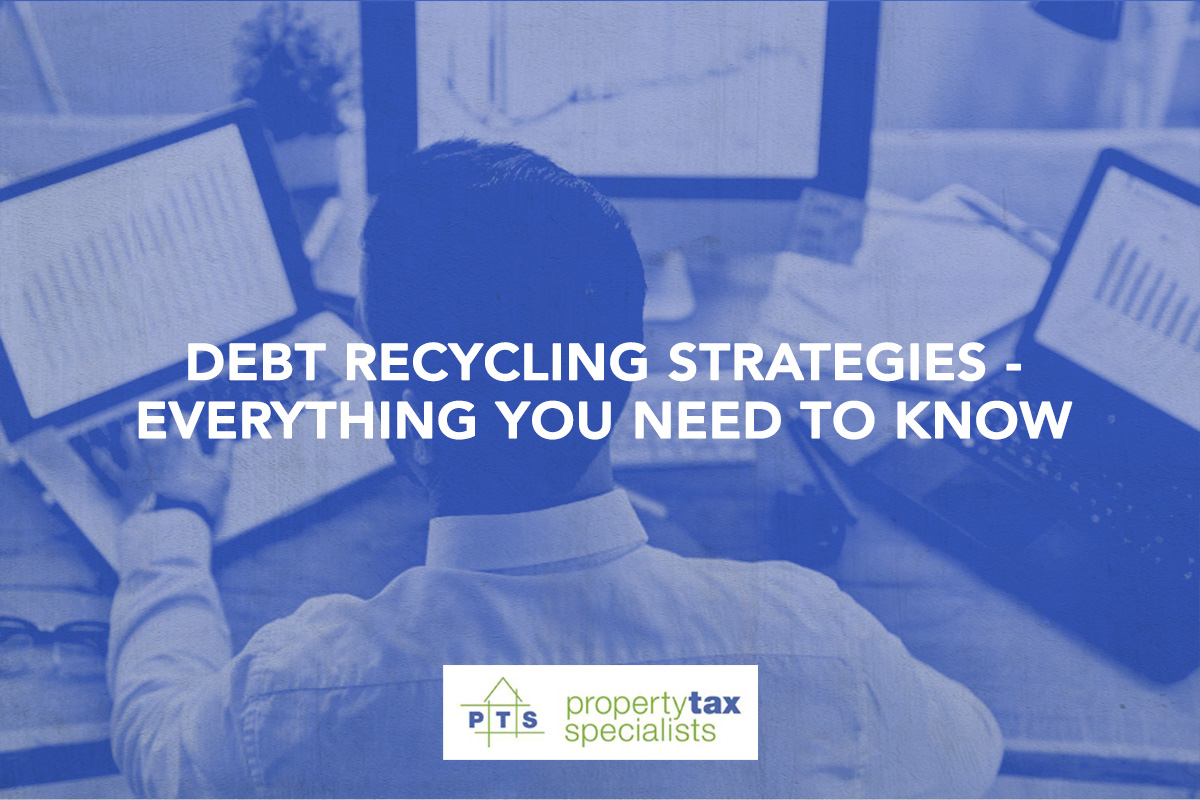Debt Recycling Strategies – Everything You Need to Know
In today’s world, debt is almost an inevitable part of life. From student loans to mortgages, credit card debt to personal loans, many of us will be in various forms of debt to a series of lenders and financial institutions. While we should always responsibly manage our debt levels, you can also use strategies to make the most of your debt and turn it into a valuable asset.
Debt recycling strategies are a perfect example of this, using your existing debt to invest in income-producing assets to generate additional income and tax benefits.
It may not be suitable for everyone, but debt recycling can be a tool for those comfortable with risk and looking to maximise their financial returns.
In this blog post, we will explore the ins and outs of debt recycling, including its benefits, risks, and key considerations to help you determine if the strategy is right for you.
What is Debt Recycling?
Debt recycling is a financial strategy that involves using your home loan to invest in income-producing assets such as stocks, bonds or property, aiming to generate more income, pay off your mortgage faster and reduce your tax liability.
This process involves paying down your mortgage, freeing up equity, and borrowing the money again to invest, thus creating a cycle of repayment and re-borrowing; hence the term ‘recycling’.
Debt recycling aims to optimise financial gains while minimising tax liability.

How Does Debt Recycling Potentially Minimise Tax Liability?
The best way to explain how debt recycling potentially minimises your tax liability is to use an example.
Let’s say you own your main residence worth $5500,000 and have $300,000 of the original home loan outstanding. This means you have $250,000 in equity in the property.
To recycle debt, you would use the existing equity in your home to establish an investment loan. Refinancing your home for $440,000, releasing $140,000 of equity. You would then invest the $140,000 in income-producing assets, such as shares or property.
The interest on the new home loan is tax-deductible as you’re using it to invest in an income-producing asset. As a result, you can claim a tax deduction for the interest you pay on the new tax-deductible investment loan, which essentially reduces your taxable income and minimises your tax liability
(Previously, interest on your main residence home loan would not have been tax deductible, because it is not an income producing asset.)
You would use the tax savings and investment income from the new investment to reduce your non-deductible original home loan.
Over time, as the income from the assets purchased with the separate investment loan grows, you can use that income to pay interest on the original home loan. As the value of the new property increases so does the equity in your new property.
You can then repeat the process of refinancing your loan to invest in more income-producing assets, further increasing your tax-deductible debt and reducing your non-deductible debt.
What are the Potential Advantages of a Debt Recycling Strategy?
The potential advantages of debt recycling include the following:
- Tax advantages: Debt recycling allows you to convert non-deductible debt (such as a home loan) into deductible debt (such as an investment loan), providing some tax advantages. For example, you can claim the investment loan interest as a tax deduction, which can reduce your taxable income and potentially result in a lower tax bill.
- Diversified investment portfolio: Debt recycling can help to diversify your investment portfolio by allowing you to invest in a range of different assets rather than relying solely on your primary residence or a single investment.
- Paying off your home loan quicker: Debt recycling can also help you pay off your home loan quicker. Using the equity in your home to pay off non-deductible debt may enable you to lower your overall interest costs and reduce your loan term, freeing up your cash flow and helping you to achieve financial freedom sooner.
Does Debt Recycling Carry Any Risk?
Yes, every financial strategy involves a degree of risk.
Some of the risks associated with debt recycling include:
- Investment risk: There is always the risk that investments may underperform or even lose money. So, when you borrow to invest, you expose yourself to certain investment risks. If the investments perform differently than expected, you could lose money, impacting your ability to meet your financial goals.
- Interest rate risk: Debt recycling relies on borrowing at a low-interest rate and investing at a higher rate of return. If interest rates rise, the cost of the investment loan will increase, reducing your investment returns and leaving you with a larger debt burden to repay.
- Cash flow risk: Debt recycling also requires ongoing surplus cash flow to service the debt, including loan fees, principal and interest payments. If your investment income falls short of these costs, you may need to find additional funds to cover the shortfall, which could put pressure on your finances.

What are the Tax Implications?
Although a debt recycling strategy has several tax deductions, you must also consider the potential implications, such as capital gains tax.
Capital gains tax is a tax that the Australian Tax Office (ATO) levies on the profit or gain you realise from selling a capital asset, such as stocks, bonds, real estate, or other investments. So, let’s say you buy a stock for $100 and sell it later for $150; the $50 difference is the capital gain, which you must declare on your income tax return and pay at your marginal tax rate.
You may be interested in reading our guide on Capital Gains Tax for Property Investments.
Why You Should Seek Expert Advice When Considering Debt Recycling
Debt recycling can be an effective strategy for wealth creation and reducing tax liability, but it also comes with potential risks and complexities. Therefore, you should seek expert advice when considering debt recycling.
Here are some reasons why:
- Assessing your financial situation: An expert can help you evaluate your financial position and determine whether debt recycling suits you based on income, assets, and debt levels.
- Understanding the risks: An expert can help you understand the risks and determine how to manage them.
- Finding the right investment: Choosing the right income-producing assets to invest in is crucial for the success of debt recycling. An expert can help you identify the most suitable investments that align with your investment goals and risk tolerance.
- Tax implications: Debt recycling involves tax implications that can be complex to navigate. An expert can advise on how to maximise the tax benefits of debt recycling and minimise tax liability.
Key Takeaways
Debt recycling is a financial strategy that involves converting non-deductible debt into deductible debt, potentially reducing tax liability and increasing investment opportunities. While this approach can effectively build wealth, you must consider the risks and seek professional advice before implementing it.
If you’re interested in exploring debt recycling for your financial situation, contact Property Tax Specialists today to receive expert guidance.
Our team can provide personalised advice tailored to your individual goals and circumstances, helping you make informed decisions about your finances.


